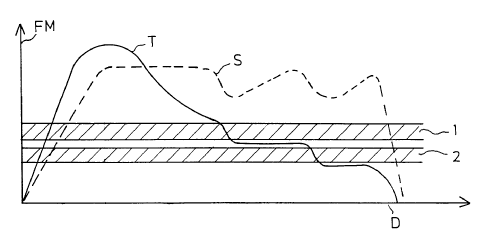Une partie des informations de ce site Web a été fournie par des sources externes. Le gouvernement du Canada n'assume aucune responsabilité concernant la précision, l'actualité ou la fiabilité des informations fournies par les sources externes. Les utilisateurs qui désirent employer cette information devraient consulter directement la source des informations. Le contenu fourni par les sources externes n'est pas assujetti aux exigences sur les langues officielles, la protection des renseignements personnels et l'accessibilité.
L'apparition de différences dans le texte et l'image des Revendications et de l'Abrégé dépend du moment auquel le document est publié. Les textes des Revendications et de l'Abrégé sont affichés :
| (12) Brevet: | (11) CA 2219489 |
|---|---|
| (54) Titre français: | METHODE D'ENROULAGE D'UNE BANDE CONTINUE DE PAPIER |
| (54) Titre anglais: | METHOD IN WINDING OF A PAPER WEB |
| Statut: | Réputé périmé |
| (51) Classification internationale des brevets (CIB): |
|
|---|---|
| (72) Inventeurs : |
|
| (73) Titulaires : |
|
| (71) Demandeurs : |
|
| (74) Agent: | SIM & MCBURNEY |
| (74) Co-agent: | |
| (45) Délivré: | 2003-01-28 |
| (22) Date de dépôt: | 1997-10-28 |
| (41) Mise à la disponibilité du public: | 1998-04-29 |
| Requête d'examen: | 1998-11-12 |
| Licence disponible: | S.O. |
| (25) Langue des documents déposés: | Anglais |
| Traité de coopération en matière de brevets (PCT): | Non |
|---|
| (30) Données de priorité de la demande: | ||||||
|---|---|---|---|---|---|---|
|
Méthode d'enroulage d'une bande continue de papier sur un rouleau, au moyen d'un enrouleur ou d'un appareil d'enroulage équivalent. La vitesse de rotation de l'enrouleur dépend de la fréquence de rotation du rouleau, de sorte que lorsque cette fréquence s'approche d'une plage d'oscillation (c.-à-d., une gamme de fréquences de rotation du rouleau à l'intérieur de laquelle survient une oscillation intensive), la vitesse de rotation diminue rapidement pour que la fréquence de rotation du rouleau soit réduite à un niveau inférieur à la fréquence la plus basse de la plage d'oscillation. Par la suite, la vitesse de rotation de l'enrouleur est augmentée afin que la fréquence de rotation du rouleau demeure essentiellement constante jusqu'à ce que, par ex., la vitesse de rotation de l'enrouleur soit atteinte avant la réduction, alors que la fréquence de rotation du rouleau s'approche de la plage d'oscillation.
A method for winding a paper web in which the paper web is wound by a winder or equivalent
winding apparatus onto a roll and the running speed of the winder is controlled based on the
frequency of rotation of the roll so that when the frequency of rotation of the roll approaches a range
of oscillation, i.e., a range of frequency of rotation of the roll in which intensive oscillation occurs,
the running speed is lowered quickly so that the frequency of rotation of the roll is reduced to a level
lower than the lower frequency of the range of oscillation. Thereafter, the running speed of the
winder is increased so that the frequency of rotation of the roll remains substantially constant until,
e.g., the running speed of the winder prior to the reduction thereof as the frequency of rotation of the
roll approached the range of oscillation is reached.
Note : Les revendications sont présentées dans la langue officielle dans laquelle elles ont été soumises.
Note : Les descriptions sont présentées dans la langue officielle dans laquelle elles ont été soumises.

Pour une meilleure compréhension de l'état de la demande ou brevet qui figure sur cette page, la rubrique Mise en garde , et les descriptions de Brevet , États administratifs , Taxes périodiques et Historique des paiements devraient être consultées.
| Titre | Date |
|---|---|
| Date de délivrance prévu | 2003-01-28 |
| (22) Dépôt | 1997-10-28 |
| (41) Mise à la disponibilité du public | 1998-04-29 |
| Requête d'examen | 1998-11-12 |
| (45) Délivré | 2003-01-28 |
| Réputé périmé | 2017-10-30 |
Il n'y a pas d'historique d'abandonnement
Les titulaires actuels et antérieures au dossier sont affichés en ordre alphabétique.
| Titulaires actuels au dossier |
|---|
| METSO PAPER, INC. |
| Titulaires antérieures au dossier |
|---|
| JORKAMA, MARKO |
| MAKELA, JARMO |
| VALMET CORPORATION |